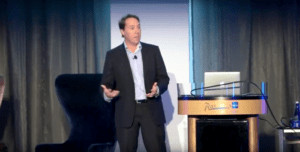
Filed under: Digital workplace
The Digital Workplace Radar provides a powerful model for making sense of future technologies. It highlights what’s here now, what’s likely to arrive in the near future, and what remains in the uncertain and distant future.
It also can be used as a basis for strategy, planning and delivery.
Three levels of activity
(Click the video to start playback)
As can be seen above, the Digital Workplace Radar provides a simple but powerful framework for working out what to do:
- For technologies or approaches that have landed, run one or more projects to ensure immediate progress.
- For things are are circling, and therefore landing in the near future, there should be a concrete strategy. This should outline what will need to be done, along with the funding and support to make it happen.
- More distant ideas that are in flight should be articulated in a vision. This must engage the whole organisation, ensuring that activities are heading in the same broad direction.
Avoid three common traps
It is easy for teams to get caught up in only one of these activities, which has significant consequences:
- Teams can be trapped in project mode, reacting to requests that only address small needs or issues. Never getting a chance to take a breath, the team finds it impossible to do strategic planning, let alone articulate a high-level vision.
- There is also a danger of waiting for a strategy to be approved, in the hope that this will allow a big leap forward. This becomes all planning, and no doing, and decay takes hold while the team is sitting still.
- Teams or individuals who spend all their time talking about the distant future can be seen as idealists (or even crackpots!). With no projects underway, and no concrete strategy, these visionaries can be quickly sidelined in the business.
All three at once
(Click the video to start playback)
The most effective approach is to be active in all three levels at the same time:
- Projects deliver improvements regularly, every six months, or quicker if agile methodologies are used. It’s critical to ensure the right improvements are picked, and the 6×2 methodology provides a robust approach.
- There must be a strategy to hand each year, if nothing else to make a request for funding or resources when budgeting comes around.
- Vision is articulated whenever possible, slowly building consensus one discussion at a time. (A week in the digital workplace provides an example of what this could look like.)
Each layer moves at a different speed, from rapid projects to a slowly emerging vision.
Use this model (and the mindset that goes with it) to ensure that you’re taking the most productive path to delivering a great digital workplace.





